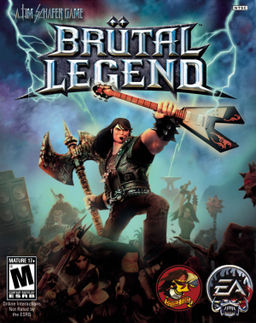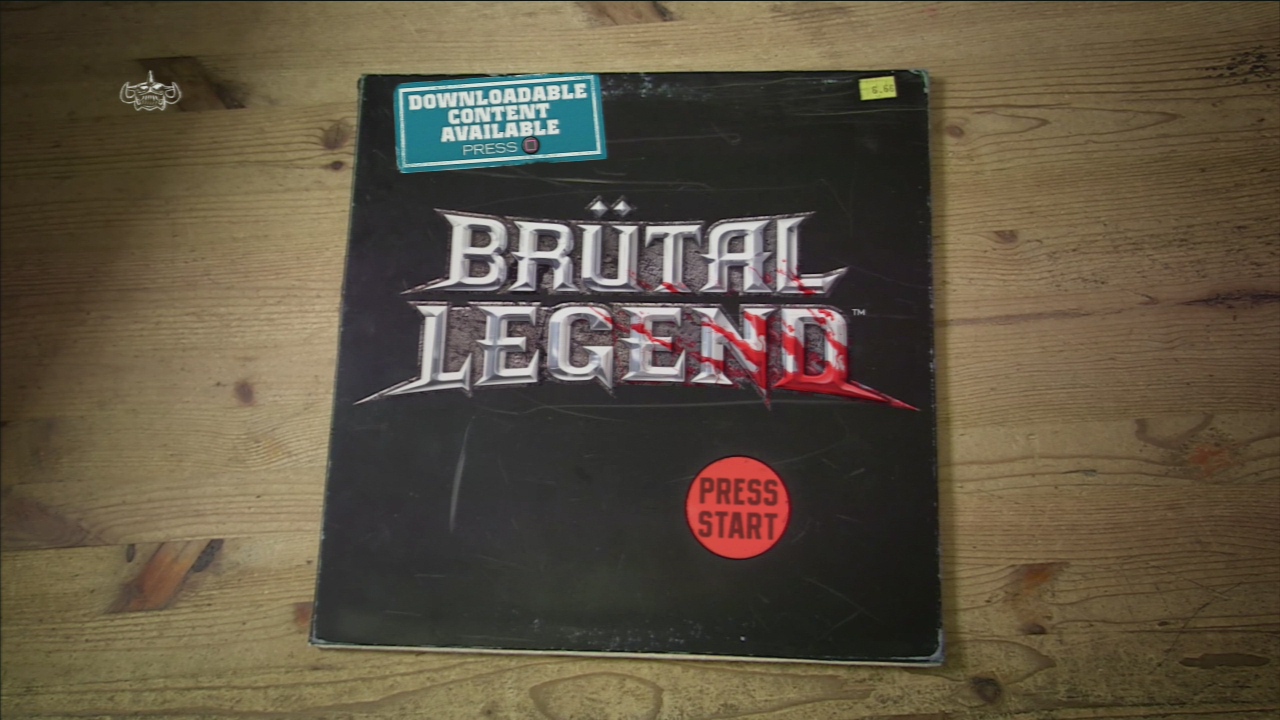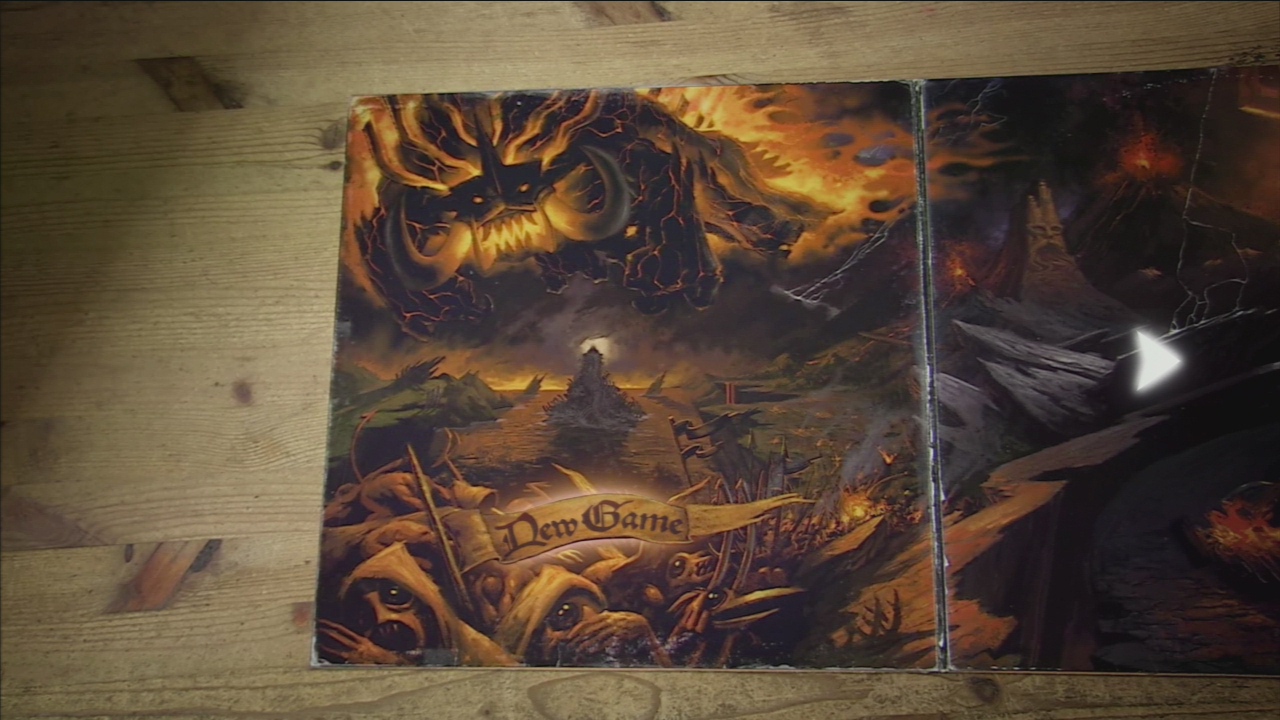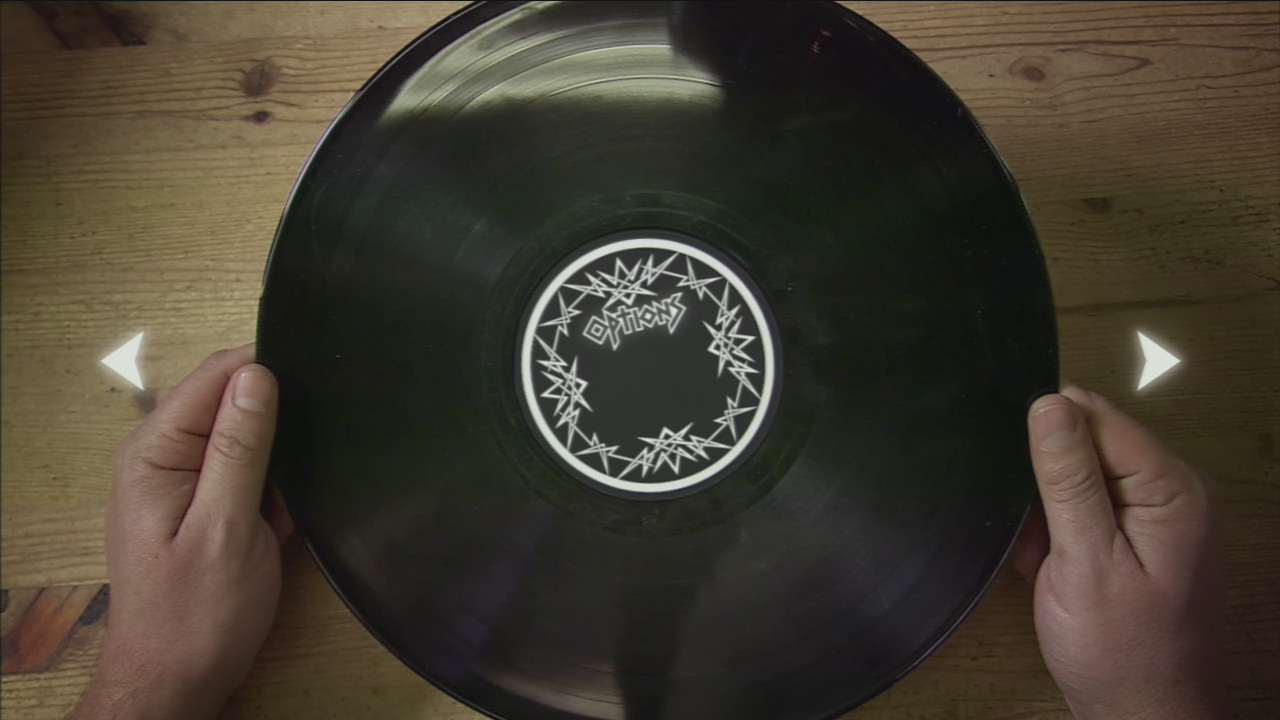Brutal Legend: A Main Menu That Will Blow Your Soul

By all accounts Brutal Legend was a game that wanted to be noticed. Unfortunately it wasn’t always for the right reasons.
One thing that was universally acclaimed about the game was how it was absolutely dripping with personality. This was clear by the main menu, which was built to mimic an old vinyl record. The game’s intro video claims “it’s not just going to blow your mind…it’s going to blow your soul”. By strict usability measures the menu isn’t perfect, but I’ll take having my soul blown over Jakob Nielsen’s approval any day of the week!
So without further ado, here’s a little video of the game startup and main menu options:
When first starting up the game, the player gets the usual cavalcade of logos and icons that promptly get skipped, as well as an intro movie. Unfortunately the intro movie, while skippable, still gets played every time, which is really annoying. Why game developers insist on continuing this tradition from the Sega CD era, I have no idea.
At least the intro movie is cool the one time you watch it (view the whole video here) - it shows Jack Black (who provides the voice for the game’s main character) going into a record store to score a copy of the super-secret, rare, and epic Brutal Legend album. Jack Black hands the camera the album, and seamlessly the video transitions into the game’s main menu:

Brutal Legend’s title screen
Generally title screens are just a waste of time, but if you’re going to have one, you might as well make it cool. It’s a great way for the game to tie in the movie with the menu, something that just doesn’t happen very frequently. Opening the album, the player starts to unpack it and discovers all of the game options.

Main menu - new game
Each option has its own page, with new game and continue being initially visible. If the system finds a save file, continue will be selected automatically. It is always a great idea to default to the option that’s most used by your users, and this is an ideal example of that.
The surprise and delight continues as the player explores the whole album, revealing a new option on each part of the album jacket as well as the record itself.

Main menu - options
The main menu shows all kinds of personality right when users are first opening the game, and that personality persists throughout the entire game. Aaron Walter’s book “Designing for Emotion” is targeted at emotional design in websites, and in it he talks about how important it is to design interfaces that have humans behind them. He closes the book with the thought “We’re not just designing pages. We’re designing human experiences.” Brutal Legend does its best to convince players it wasn’t just built by some nerdy programmers, but instead it was forged from an ancient tome passed down by the gods of metal.
Strictly usability-wise, the options of the main menu aren’t very discoverable, no. And the time it takes for the animation to play between each screen is probably a little longer than using a traditional menu system. But the interaction immediately works to start getting the player immersed into the game right away, and it brings a smile to their face before any gameplay happens. After all, gaming is about having fun, and if cracking open a metal record isn’t fun, I don’t know what is.